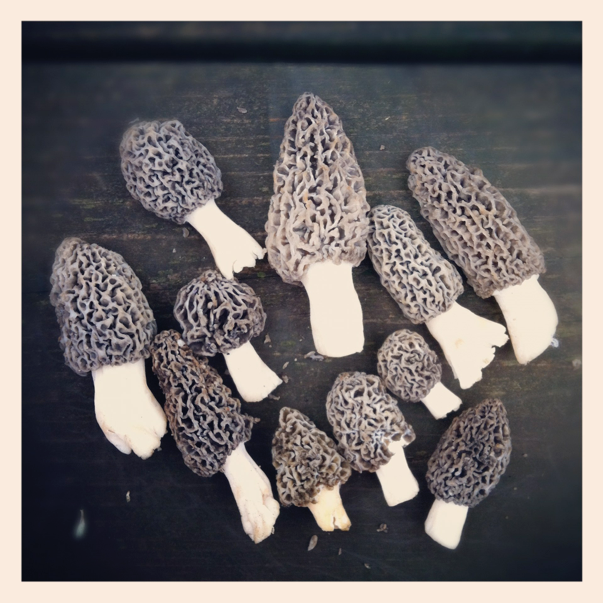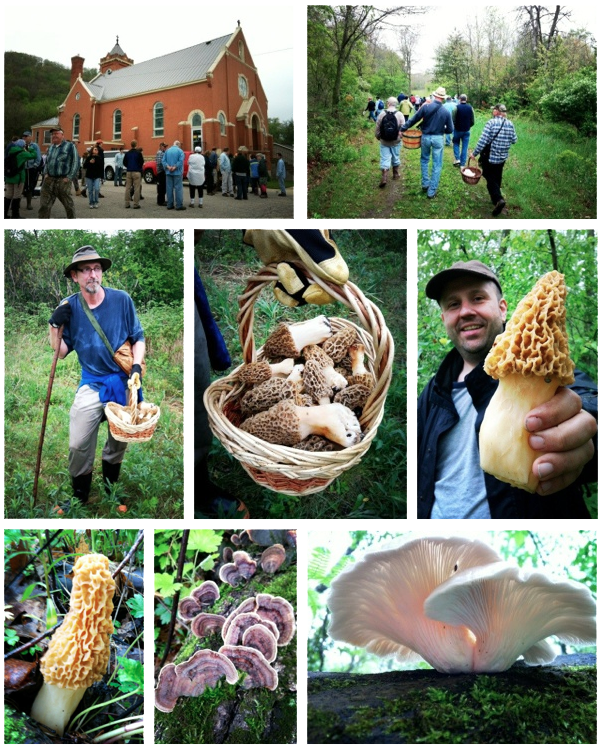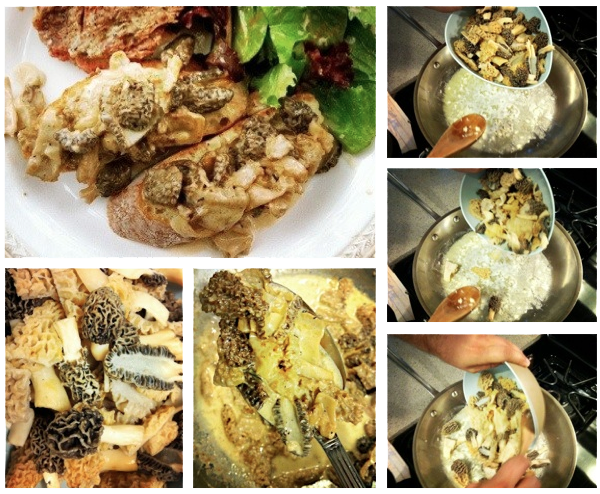
It’s a cool, rainy day. We are in the wilderness, hiking through bushes and trees, noses down, eyes scanning the forest floor, hunting. In my pocket is a knife, a net bag and hopefully, my car keys. It’s not big game we are after, it’s mushrooms; specifically, the shy, elusive and delicious morel. For two and a half hours we search, finding nothing but prickly ash, berry briars, ticks and poisonous fungus. My socks and shoes are soaked with water, squishing as I walk. My partner was not amused. Time was running out. We were overdue back at the meeting place and a big thunder storm was rolling in. Suddenly, there it was – a big fat morel. Then my partner found a huge one. Looking down I saw Jack-in-the-Pulpit and May Apple plants everywhere. Looking up, we were standing in whole grove of dead elm trees. Half hour later we had nine very large “Bigfoot” yellow morels, some longer than my hand.
Hunting mushrooms is addicting. It’s like gambling. Once you win a couple times, you just can’t stop. I’m a total novice hunter, so when I stumbled upon a stash of wild oyster mushroom growing near my house last fall, I had to know more. What a rush to find something so scrumptious (and free) near my own back yard. So this past winter my partner Christopher and I joined the Minnesota Mycological Society (MMS), which in addition to having a great education program, also hosts big-time forays for edible mushroom all over the state. These forays are great because if you follow the leaders, they tell you all about the basics, point out other edible, as well as deadly species, and help you identify the mushrooms you collect. It’s always good to have a real mycologist on hand so you don’t poison yourself.
We’ve been on two official forays, one in Sakatah State Park and the other in the White Water Wildlife Refuge, and a couple on our own in South Minneapolis. You learn the basics pretty quick. Hunt with open containers, like wicker baskets or mesh bags, which allow the mushroom spores to fall out while you walk through the forest. When you’re looking for morels, scan the area for Jack-in-the-Pulpit and May Apple plants. They indicate the right temperature, light and soil conditions for morels. And finally, look for dead elm trees, preferably ones with the bark just beginning to peal off. Morels often grow from the decaying roots of these trees, so the mushrooms can be anywhere from five to fifteen feet away from the trunk. They also grow on other dead trees, but I have yet to see that in action. There are more tricks I’m sure, but I just started this process, so I’m learning.
And now for the disclaimer: For god-sake, if you aren’t certain what mushroom you have found, don’t eat it!!! Also, dress to protect yourself from ticks. The little suckers are everywhere. Just ask me. Eew. Below you’ll find images from our recent foray to White Water, followed by a quick recipe to savor your morel bounty.

